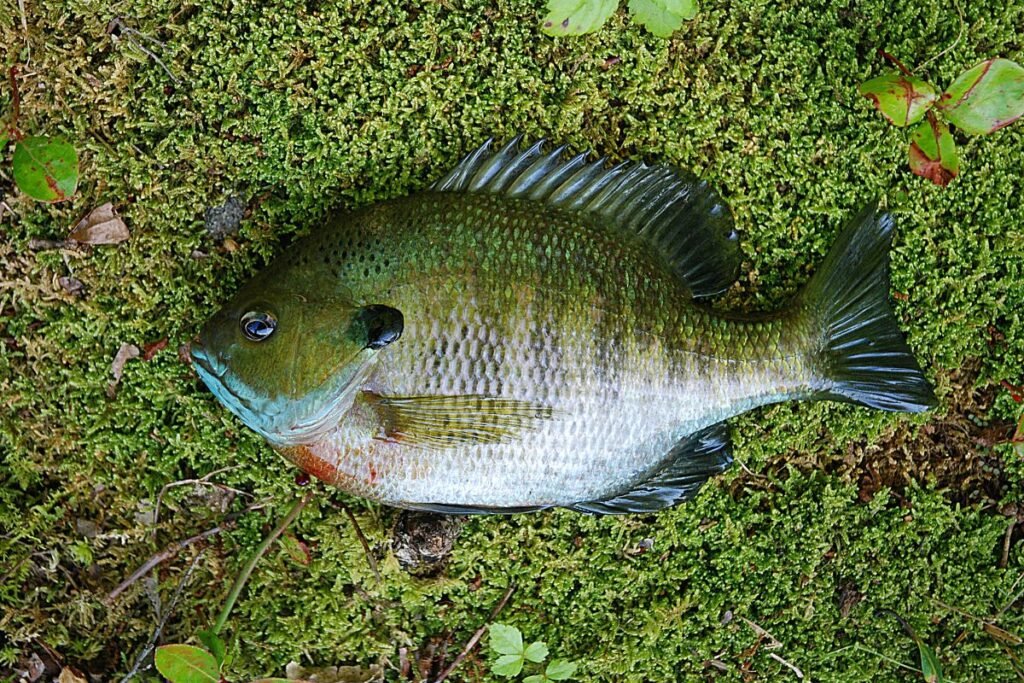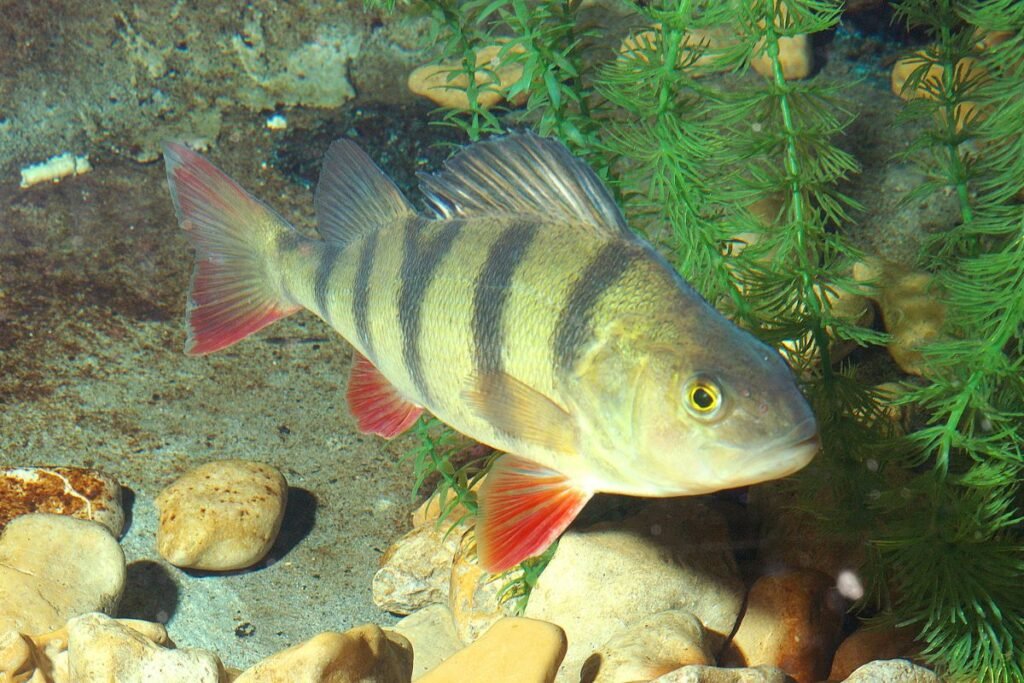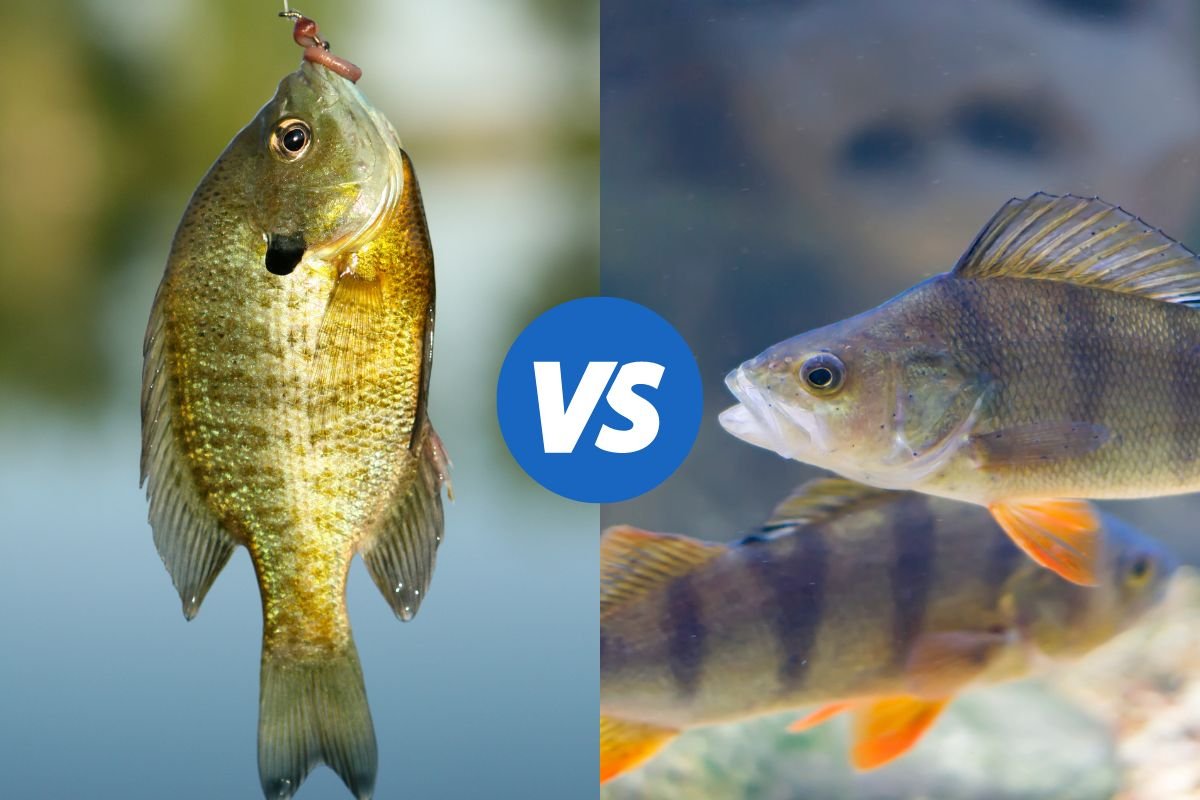When it comes to freshwater fishing, bluegill and perch are two popular species that anglers often target. Both offer exciting opportunities for anglers of all skill levels, but they also have distinct characteristics that set them apart.
We’re going to explore the various aspects of bluegill and perch, comparing their biology, habitat, nutritional value, and more. By the end, you’ll have a comprehensive understanding of these two fish and be better equipped to catch, cook, and appreciate them.
Biology and Anatomy of Bluegill and Perch
Before delving into the specifics of bluegill and perch, it’s essential to understand their biology and anatomy. Bluegill, scientifically known as Lepomis macrochirus, belong to the sunfish family and are characterized by their distinctive blue-green coloration and pronounced gill flap. They typically have a round body shape with a small mouth and dark vertical bars along their sides.
On the other hand, perch, belonging to the Percidae family, encompass several species such as yellow perch and European perch. They are recognized by their elongated body, with distinctive vertical stripes running down their sides. Perch have sharp spines on their dorsal fins and a terminal mouth, making them efficient predators.
Despite their differences, both bluegill and perch share similarities in their reproductive habits, often spawning during the spring and early summer months in shallow waters. Understanding the biology and anatomy of these fish is crucial for effective fishing techniques and conservation efforts.
Habitat and Distribution Bluegill vs Perch
Bluegill and perch inhabit a wide range of freshwater environments, from lakes and ponds to rivers and streams. Understanding their preferred habitat and distribution is key to finding and catching them successfully.
Bluegill are commonly found in warm, shallow waters with plenty of vegetation and structure. They prefer areas with sandy or muddy bottoms and are often found near submerged logs, weed beds, or rocky areas.
In contrast, perch tend to inhabit slightly deeper waters, preferring cooler temperatures and rocky substrates. They are often found near underwater structures such as rocks, fallen trees, or submerged vegetation.
Both species can adapt to various habitats and water conditions, making them accessible to anglers in a variety of locations. However, understanding the specific preferences of each species can greatly improve your chances of success on the water.

Nutritional Differences Between Bluegill and Perch
Diet plays a significant role in determining the nutritional composition of fish, and both bluegill and perch have distinct feeding habits that influence their nutritional value. In this section, we’ll explore the nutritional differences between these two species and how they can impact your diet and health.
Bluegill, being omnivorous, have a varied diet consisting of aquatic insects, small fish, crustaceans, and plant matter. This diverse diet contributes to their nutritional profile, which is rich in protein, omega-3 fatty acids, vitamins, and minerals.
Bluegill are particularly high in protein, making them an excellent source of lean protein for muscle growth and repair. Additionally, they contain significant levels of omega-3 fatty acids, which are essential for heart health and brain function.
Perch, on the other hand, are primarily piscivorous, meaning they primarily feed on other fish. Their diet typically consists of small fish, insects, crustaceans, and occasionally plant matter. Perch are also rich in protein, omega-3 fatty acids, and various vitamins and minerals.
However, their higher consumption of other fish may result in slightly higher levels of certain nutrients such as omega-3 fatty acids, which are abundant in fatty fish like herring and salmon.
When comparing the nutritional profiles of bluegill and perch, both offer excellent sources of protein and essential nutrients. However, the specific composition may vary slightly depending on factors such as diet, habitat, and environmental conditions.
In the next installment, we’ll share valuable fishing tips for catching bluegill and perch, helping you improve your angling skills and increase your chances of success on the water.
| Nutrient | Bluegill | Perch | Difference |
|---|---|---|---|
| Calories | 94 | 84 | -10 |
| Protein | 19.3 g | 18.6 g | -0.7 g |
| Fat | 1.6 g | 1.3 g | -0.3 g |
| Saturated Fat | 0.4 g | 0.3 g | -0.1 g |
| Omega-3 Fatty Acids | 0.5 g | 0.4 g | -0.1 g |
| Vitamin D | 0.6 mcg | 5.7 mcg | +5.1 mcg |
| Vitamin B12 | 2.0 mcg | 2.2 mcg | +0.2 mcg |
| Selenium | 22.9 mcg | 27.3 mcg | +4.4 mcg |
| Phosphorus | 221 mg | 200 mg | -21 mg |
| Potassium | 399 mg | 397 mg | -2 mg |
Fishing Tips: Catching Bluegill and Perch
Successfully catching bluegill and perch requires a combination of knowledge, skill, and strategy. In this section, we’ll provide you with valuable tips and techniques to improve your chances of landing these prized freshwater species.
Understand Their Behavior: Bluegill and perch are both opportunistic feeders but exhibit slightly different feeding behaviors. Bluegill are more likely to feed near the surface, especially in the early morning and late afternoon, while perch tend to stay closer to the bottom, hunting for prey. Understanding their behavior can help you target them more effectively.
Choose the Right Bait: Both bluegill and perch are attracted to a variety of baits, including live bait such as worms, minnows, and insects, as well as artificial lures such as jigs, spinners, and small crankbaits. Experiment with different bait options to determine what works best in your fishing location and conditions.
Use Light Tackle: Bluegill and perch have relatively small mouths, so using light tackle is essential for a successful hookup. Opt for ultralight or light spinning rods and reels paired with light line (4-8 lb test) to maximize sensitivity and feel when fishing for these species.
Target Structure and Cover: Bluegill and perch are both structure-oriented species and are often found near submerged vegetation, fallen trees, rocks, and other underwater structures. Targeting these areas with your bait or lure can increase your chances of encountering feeding fish.
Stay Mobile: If you’re not having luck in one spot, don’t be afraid to move around and explore different areas of the waterbody. Bluegill and perch are constantly on the move in search of food, so staying mobile can help you locate actively feeding fish.
Be Patient and Observant: Patience is key when fishing for bluegill and perch, especially if you’re targeting them with live bait. Allow the fish time to inspect and take the bait before setting the hook. Additionally, pay attention to subtle movements or nibbles on your line, as these can indicate bites from cautious fish.
By incorporating these fishing tips into your angling arsenal, you’ll be well-equipped to catch bluegill and perch with confidence and skill. In the next installment, we’ll delve into the taste comparison between bluegill and perch, exploring the flavors and culinary characteristics of these delicious freshwater fish.
Want to learn more about fish? Check out Tuna Vs Swordfish
Taste Comparison: Bluegill vs Perch
Bluegill and perch are both prized by anglers not only for their sporting qualities but also for their delicious taste. In this section, we’ll compare the flavors, textures, and culinary characteristics of bluegill and perch to help you appreciate the unique qualities of each species.
Flavor: Bluegill, often referred to as “panfish,” have a mild, sweet flavor that is highly sought after by seafood enthusiasts. Their flesh is delicate and tender, with a subtle sweetness that pairs well with a variety of seasonings and cooking methods. Perch, on the other hand, have a slightly stronger flavor compared to bluegill.
Their flesh is firmer and has a more pronounced taste, often described as sweet and slightly earthy.
Texture: Bluegill fillets are known for their tender, flaky texture, which lends itself well to pan-frying, baking, or grilling. The flesh of bluegill is relatively lean, with minimal fat content, resulting in a light and delicate mouthfeel.
Perch fillets, while still tender, have a firmer texture compared to bluegill. Their flesh is slightly denser, with larger flakes that hold together well during cooking.
Culinary Characteristics: Both bluegill and perch are versatile ingredients that can be prepared in a variety of ways. Pan-frying is a popular method for cooking both species, allowing the natural flavors to shine while creating a crispy exterior.
Bluegill fillets are often seasoned with simple herbs and spices or coated in a light batter before frying. Perch, with their firmer texture, are well-suited for grilling or baking, where they can withstand higher temperatures without falling apart.
Pairing Suggestions: When it comes to pairing bluegill and perch with other ingredients, simplicity is key. Fresh herbs such as parsley, dill, and thyme complement the delicate flavors of both fish without overpowering them.
Lemon wedges or a squeeze of fresh lemon juice can also enhance the natural sweetness of bluegill and perch. For side dishes, consider serving roasted vegetables, wild rice, or a crisp salad to round out the meal.
Delicious Recipes for Cooking Bluegill and Perch
Cooking bluegill and perch offers a wonderful opportunity to explore the flavors of these freshwater fish in creative and delicious ways. In this section, we’ll share some mouthwatering recipes that highlight the unique qualities of bluegill and perch, from simple pan-frying to more elaborate preparations.
Pan-Fried Bluegill with Lemon Herb Butter
Ingredients:
4 bluegill fillets
Salt and pepper to taste
2 tablespoons olive oil
2 tablespoons butter
2 cloves garlic, minced
Zest of 1 lemon
2 tablespoons fresh parsley, chopped
Lemon wedges for serving
Instructions:
- Season the bluegill fillets with salt and pepper on both sides.
- Heat olive oil in a large skillet over medium heat.
- Add the bluegill fillets to the skillet and cook for 3-4 minutes on each side, or until golden brown and cooked through. Remove from skillet and set aside.
- In the same skillet, melt the butter over medium heat. Add minced garlic and cook until fragrant, about 1 minute.
- Stir in lemon zest and chopped parsley, then drizzle the lemon herb butter over the cooked bluegill fillets.
Serve immediately with lemon wedges on the side.
Grilled Perch Tacos with Mango Salsa
Ingredients:
4 perch fillets
Salt and pepper to taste
1 tablespoon olive oil
8 small corn tortillas
1 cup shredded cabbage
1 mango, diced
1/2 red onion, diced
1 jalapeño, seeded and diced
Juice of 1 lime
2 tablespoons fresh cilantro, chopped
Instructions:
- Preheat grill to medium-high heat.
- Season perch fillets with salt, pepper, and olive oil.
- Grill perch fillets for 3-4 minutes on each side, or until cooked through and flaky. Remove from grill and set aside.
- Warm corn tortillas on the grill for about 1 minute on each side.
- In a bowl, combine diced mango, red onion, jalapeño, lime juice, and chopped cilantro to make the salsa.
- To assemble tacos, place grilled perch fillets on warmed corn tortillas, top with shredded cabbage, and spoon mango salsa over the fish.
Serve immediately with additional lime wedges on the side.
These recipes showcase just a few of the many delicious ways to prepare bluegill and perch. Whether you prefer simple pan-frying or more adventurous grilled tacos, these dishes are sure to impress your family and friends with the fresh flavors of these freshwater favorites.
In the next installment, we’ll dive into the natural habitat of bluegill and perch, exploring the environments where these fish thrive and how their habitat influences their behavior and growth.

Exploring the Natural Habitat of Bluegill and Perch
Understanding the natural habitat of bluegill and perch is essential for anglers looking to target these species effectively. In this section, we’ll explore the environments where bluegill and perch thrive, including their preferred habitats, behavior, and how environmental factors influence their populations.
Bluegill Habitat
Bluegill are commonly found in freshwater bodies such as lakes, ponds, rivers, and streams throughout North America. They prefer warm, shallow waters with plenty of vegetation and structure, which provide ample food sources and shelter. Bluegill thrive in habitats with sandy or muddy bottoms, as well as submerged logs, weed beds, and rocky areas. These habitats offer protection from predators and abundant insect life for bluegill to feed on.
During the breeding season, bluegill migrate to shallow, vegetated areas to spawn, typically in the spring and early summer months. They build nests in colonies, with males creating circular depressions in the substrate to attract females for spawning. Bluegill are also known to form schools, especially during the cooler months, when they seek deeper waters with more stable temperatures.
Perch Habitat
Perch inhabit a wide range of freshwater environments, including lakes, rivers, ponds, and reservoirs across North America and Europe. They are adaptable species capable of thriving in various habitats, from shallow weedy areas to deeper, rocky waters. Perch prefer cooler temperatures compared to bluegill and are often found in deeper waters during the warmer months.
Like bluegill, perch are structure-oriented fish and are commonly found near submerged vegetation, fallen trees, rocks, and other underwater structures. These habitats provide cover and ambush opportunities for perch to hunt their prey, which primarily consists of small fish, insects, and crustaceans. During the spawning season, perch migrate to shallow, rocky areas with clean substrate to lay their eggs, typically in the spring months.
Environmental Factors Bluegill Vs Perch
Several environmental factors influence the distribution and abundance of bluegill and perch populations, including water temperature, oxygen levels, water clarity, and habitat availability. Bluegill are more tolerant of warmer temperatures and lower oxygen levels compared to perch, allowing them to thrive in a wider range of habitats. Perch, on the other hand, prefer cooler temperatures and well-oxygenated waters, making them more sensitive to environmental changes.
Human activities such as habitat destruction, pollution, and overfishing can also impact bluegill and perch populations, affecting their natural habitat and overall health. Conservation efforts focused on habitat restoration, water quality improvement, and sustainable fishing practices are essential for maintaining healthy bluegill and perch populations for future generations of anglers to enjoy.
By understanding the natural habitat of bluegill and perch and how environmental factors influence their behavior and distribution, anglers can make informed decisions about where and when to target these species effectively. In the final installment, we’ll evaluate the advantages and disadvantages of bluegill and perch as game fish, helping you decide which species is best suited for your fishing preferences and goals.
Want to learn about other fish? Checking Herring vs Sardines
Conclusion
Bluegill and perch offer diverse fishing experiences. Bluegill’s mild taste and ease of catch make them ideal for beginners, while perch’s stronger flavor and challenge appeal to seasoned anglers.
Both species provide valuable opportunities for anglers to connect with nature and enjoy the thrill of the catch. Understanding their unique qualities allows anglers to make informed decisions and create memorable experiences on the water.
Whether casting for bluegill in tranquil ponds or targeting perch in pristine lakes, responsible angling practices ensure enjoyment for generations to come. Fishing isn’t just about the catch—it’s about the journey and the connection to nature.
Have you ever used these as bait? Tell us about your experience in the comments below!



